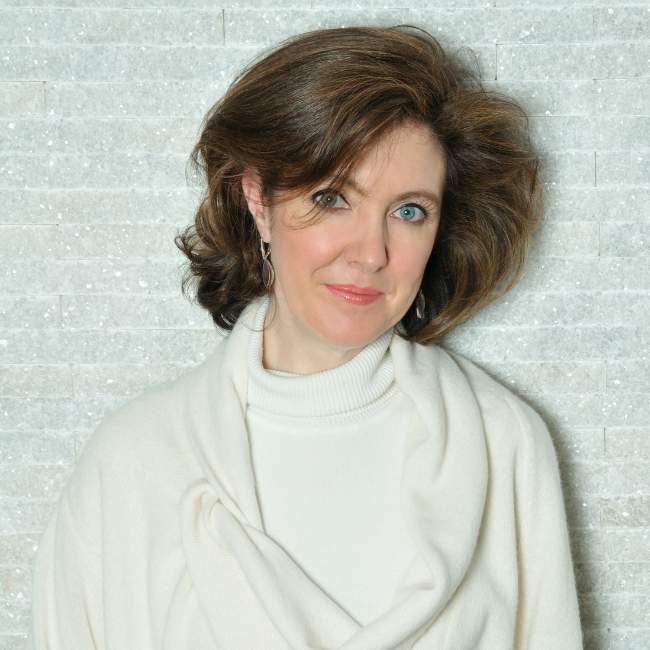Musical worlds collide with Mozart and Messiaen in NWS chamber finale
One can hardly think of two composers with more different musical aesthetics than Mozart and Messiaen. Significant works by these two masters formed the portals of the New World Symphony’s final chamber music program of 2024 on Sunday afternoon at the New World Center.
Australian composer Melody Eōtvōs’ The King in Yellow was the concert’s spicy opener. Her 2012 score is based on three stories from a late-19th century psychological horror collection by Robert W. Chambers. Scored for flute/ piccolo, clarinet, piano, violin, cello and percussion, the work’s spicy motivic fragments and subtle interplay of instrumental timbres perk up the ear in three movements spanning ten minutes. On a program of large-scale pieces, Eōtvōs’ three vignettes proved a charming outlier. Michael Linville conducted a well-integrated, colorful traversal. Projections of suggestive images by Clyde Scott and Michael Matamoros enhanced the music’s spooky atmospherics.
Anne-Marie McDermott made a welcome return as featured pianist in the Mozart and Messiaen compositions. McDermott is one of the finest collaborative artists on the concert scene. A veteran member of the Chamber Music Society of Lincoln Center, her stellar technique and artistic versatility are best displayed in chamber works. In 2019, she joined New World fellows in a performance of Bartok’s early Piano Quintet that really caught fire. She was no less persuasive in the classicism of Mozart and the path-breaking originality of Messiaen.
Mozart considered his Quintet in E-flat Major for piano and winds to be one of his finest creations. In many ways, it matches the Salzburg wunderkind’s piano concertos for thematic invention and delicacy of scoring. The second movement Larghetto features one of those indelible Mozartean melodies that linger in the ear long after the performance has ended.
McDermott’s nimble dexterity, lithe touch and patrician sense of Mozart’s aristocratic melody were the fulcrum of a finely proportioned reading. The spry tune of the concluding Rondo: Allegretto was given lightness and delicacy. Andrew Port’s amber-toned oboe, Evyn Levy’s crystalline clarinet, Sylvia Denecke’s solid horn and Matthew Matheny’s strongly integrated bassoon all added to a winning performance of one of Mozart’s most unique scores.
Olivier Messiaen (1908-1992) was a prisoner of war at a German camp in Poland when he created Quartet for the End of Time in 1940-41. He found fellow musicians among the inmates and, with help from sympathetic guards, wrote and staged a performance of his new piece. It is nothing less than remarkable that in the barren and frigid conditions of his captivity the composer created one of the greatest works of the twentieth century chamber music repertoire. The unusual combination of piano, clarinet, violin and cello corresponded to the players available to him in the prison.
Messiaen was one of the truly original voices of the last century. Although he was influenced by the impressionists, his music could never be mistaken for Debussy or Ravel. Birdsong, spirituality and the sonorities of the organ were the main focus of Messiaen’s creative toolkit and those influences gleam in the eight-movement, 46-minute quartet. Inspired by the biblical Book of Revelations, the works veers between musical portraits of birds and fire and homages to the divinity of Jesus, Both fiercely dissonant and serenely contemplative, Messiaen wrote a one-of-a kind-opus.
New World alum Pascal Archer intoned the catchy rhythmic intervals of the opening “Crystal Liturgy” with mellow clarinet tone and daunting leaps of registers. Switching gears from her deft Mozart playing, McDermott’s crashing chords and mastery of Messiaen’s thorny idiom evoked the terror of “Vocalise for the Angel Announcing the End of Time.” Archer’s dynamic nuances from multiple levels of pianissimo to loud cries converted the “Abyss of the Birds.” His sound remained rounded and beautiful, even in the instrument’s highest register and the movement’s harshest passages. Owen Ruff’s bright, transparent violin enhanced the almost neo-classical subject of “Interlude.”
The evenly produced sonority of Hana Cohon’s solo cello channeled the calm serenity of “Praise to the Eternity of Jesus,” a contrast to the frenzied aura of much of the score. “Dance of Wrath, for the Seven Trumpets” suggested a sinister dance macabre with all four players hitting top speed and power.
The eerie, unsettled opening pages of “Tangle of Rainbows, for the Angel Announcing the End of Time” for cello and piano emerged with emotional depth, Cohon and McDermott registering maximum impact. Ruff’s soft playing of bracing intensity took the full measure of “In Praise of the Immortality of Jesus,” the concluding moments seeming to reach some higher spiritual realm.
Throughout the work’s shifts of mood and meter, McDermott’s color palette matched the wide span of Messiaen’s tonal panorama. This splendid iteration of a monumental opus was the perfect ending to a varied, consistently engrossing year of chamber music concerts.
Paolo Bortolameolli conducts the New World Symphony in a tango program with bandoneon player Julien Labro, 8 p.m. January 11, 2025 at the Arsht Center in Miami. nws.edu
Posted in Uncategorized
Leave a Comment
Mon Dec 23, 2024
at 11:51 am
No Comments
